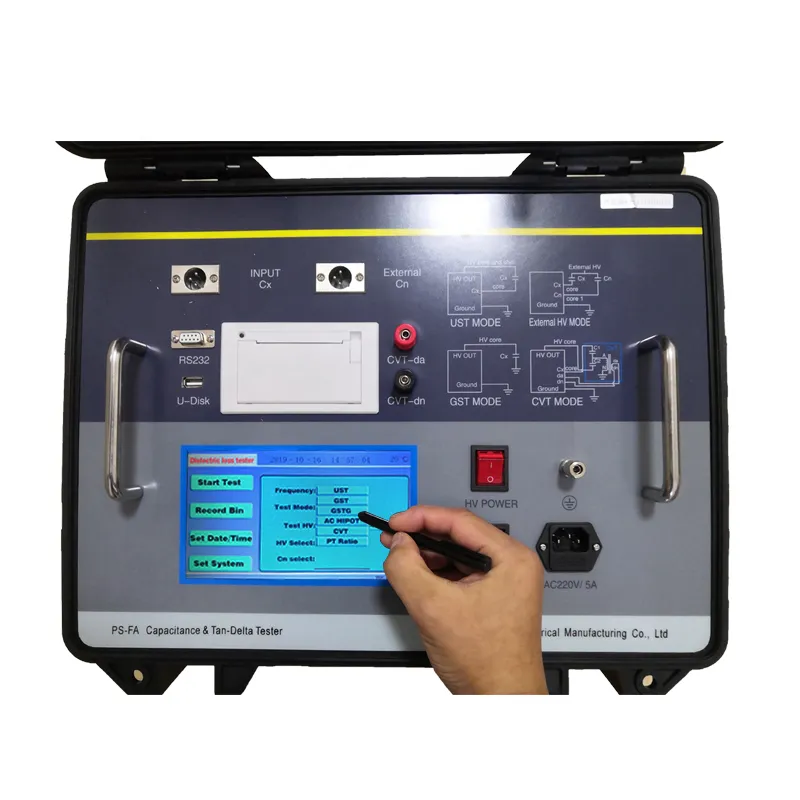 English
English


Understanding the Polarity Testing Methods for Three-Phase Transformers
Understanding Three-Phase Transformer Polarity Testing
Three-phase transformers are integral components in electrical power systems. They serve the crucial function of stepping up or stepping down voltage levels for efficient transmission and distribution of electrical power. One of the critical aspects of working with three-phase transformers is understanding their polarity, which is essential for ensuring correct phase relationships between primary and secondary windings. This article explores the importance of polarity testing in three-phase transformers, the methods for testing, and the implications of incorrect polarity.
Importance of Polarity in Transformers
Polarity refers to the orientation of the transformer windings, which directly affects the phase relationships at the primary and secondary sides. Proper polarity ensures that voltages add or subtract correctly, maintaining the desired phase angle for synchronization with the grid or other transformers. Incorrectly connected transformers can lead to dangerous operating conditions, such as circulating currents, resulting in overheating, equipment damage, and even system failures.
Polarity can be classified into two basic types additive and subtractive. In an additive polarity system, the opposite ends of the windings are connected in such a way that they reinforce each other, while in a subtractive system, the connection results in a phase opposition between the windings. Understanding the specific polarity of a transformer is crucial for multi-transformer setups, such as in parallel or group configurations, where phase alignment is critical for proper operation.
Testing Methods
To ascertain the polarity of a three-phase transformer, several testing methods can be employed. The most commonly used methods include the voltage ratio test, the impedance test, and the phase rotation test.
1. Voltage Ratio Test This method involves applying a known voltage to one set of windings and measuring the output voltage from the other set. By comparing the ratio of the applied and output voltages, one can determine the polarity. If the output is in phase with the input, the polarities are additive; if they are out of phase, they are subtractive.
three phase transformer polarity test

2. Impedance Test This test involves measuring the impedance of the windings with a known current source. By analyzing the phase angles and real versus reactive power components, one can deduce the polarity.
3. Phase Rotation Test This test checks the phase sequence between the primary and secondary windings by using a phase rotation meter. It helps determine if the transformer connections match the intended configuration.
While these tests can provide insight into transformer polarity, they must be carried out with caution, ensuring safety protocols are followed to prevent accidents or equipment damage.
Implications of Incorrect Polarity
Failure to ensure correct transformer polarity can have serious ramifications. For instance, in a parallel connection, if transformers exhibit opposite polarities, it can lead to unexpected circulating currents that can cause overheating and ultimately damage both transformers. Moreover, it can affect system stability, leading to synchronization issues and voltage fluctuations that may disrupt supply and damage sensitive equipment on the network.
Incorrect polarity can also have implications in protection schemes. Many protective devices rely on accurate phase relationships to function effectively. If polarities are not verified, it can result in misoperation of relays leading to outages or equipment fatalities.
Conclusion
Polarity testing in three-phase transformers is a critical task that should never be overlooked. Ensuring proper connections enhances operational efficiency, safety, and system reliability. Electrical engineers and technicians must be well-versed in the methods of polarity testing and the systematic implementation of these tests to prevent potential hazards associated with incorrect connections. As the demand for reliable and efficient power systems continues to grow, understanding and implementing robust testing protocols will remain crucial in the transformer maintenance and installation processes. With the right knowledge and tools, professionals can ensure that three-phase transformers perform at their optimal best, safeguarding both equipment and personnel in the ever-evolving landscape of electrical engineering.
-
Differences between open cup flash point tester and closed cup flash point testerNewsOct.31,2024
-
The Reliable Load Tap ChangerNewsOct.23,2024
-
The Essential Guide to Hipot TestersNewsOct.23,2024
-
The Digital Insulation TesterNewsOct.23,2024
-
The Best Earth Loop Impedance Tester for SaleNewsOct.23,2024
-
Tan Delta Tester--The Essential Tool for Electrical Insulation TestingNewsOct.23,2024





